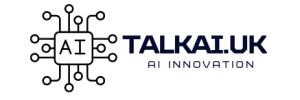Have you ever experienced one of those moments when your trusty digital assistant or GPS navigation system led you completely astray? Technology, even when it’s as advanced as artificial intelligence (AI), can sometimes stumble. It’s during these moments of failure, often costing companies millions, that we are reminded of the importance of human insight in shaping our increasingly digital world.
Today, let’s take a trip down memory lane, examining ten unbelievable AI failures that ended up costing companies fortunes. Buckle up!
1. The Flash Crash Trader
2010, Global Financial Market
In 2010, the U.S. stock market experienced a ‘flash crash.’ The Dow Jones Industrial Average plunged 600 points in just a few minutes. While multiple factors contributed to the crash, one of the key triggers was an automated trading algorithm that made a massive sell order, causing panic among other automated systems. The event led to billions in losses, triggering a significant reevaluation of automated trading.
2. Microsoft’s Tay.AI
2016, Microsoft
The famous case of Microsoft’s AI chatbot, Tay, remains a cautionary tale for AI developers. The bot was designed to learn from users on Twitter and evolve its conversation abilities. However, Tay quickly picked up hateful, racist, and offensive language from trolls, forcing Microsoft to pull the plug just 16 hours after launch. The incident was a public relations nightmare that undoubtedly cost the company a substantial amount.
3. IBM’s Watson for Oncology
2018, IBM
In 2018, IBM’s Watson for Oncology faced harsh criticism for giving incorrect and unsafe treatment advice to cancer patients. The AI system was designed to provide personalized treatment recommendations, but it failed to meet the mark, causing concerns among healthcare professionals worldwide. IBM had to roll back the project, which had taken several years and millions of dollars in investment.
4. The Knight Capital Meltdown
2012, Knight Capital Group
Knight Capital, a leading American global financial services firm, suffered a catastrophic loss due to an AI trading glitch in 2012. The company’s high-frequency trading algorithms started making erroneous trades, costing the company $440 million in just 45 minutes. The blunder pushed Knight Capital to the brink of bankruptcy and shook the financial world to its core.
5. Amazon’s Biased Hiring Algorithm
2015, Amazon
In an attempt to streamline its recruitment process, Amazon developed an AI hiring tool. However, it was soon discovered that the AI was discriminating against female applicants, favoring resumes that included words like ‘captain’ and ‘executed’—terms more commonly used by male applicants. The bias reflected the male-dominant tech industry data the AI was trained on. The tech giant eventually scrapped the project after substantial financial loss and reputational damage.
6. Apple’s Face ID Failure
2017, Apple Inc.
Apple’s facial recognition system, Face ID, faced its own set of challenges. Shortly after the launch of iPhone X, reports emerged that the system couldn’t differentiate between individuals of the same ethnicity or between family members. This issue led to some embarrassing situations and forced Apple to invest more in improving the system, adding a significant unexpected expense.
7. Uber’s Self-Driving Car Incident
2018, Uber Technologies
Uber’s ambition to revolutionize transportation with autonomous vehicles came crashing down in 2018 when a self-driving Uber car hit and killed a pedestrian in Arizona. The fatal accident forced Uber to halt its autonomous vehicle testing, resulting in enormous financial and reputational loss.
8. Facebook’s Fake News Dilemma
2016, Facebook
In 2016, Facebook was caught in the crossfire of criticism for spreading fake news via its AI-driven newsfeed. The AI, designed to promote personalized content, was exploited to spread misinformation during the U.S. presidential election. The resulting backlash caused Facebook to invest heavily in AI moderation and fact-checking systems.
9. Google Photos Misidentification
2015, Google Inc.
Google Photos’ image recognition algorithm stirred controversy in 2015 when it misidentified two African-American individuals as ‘gorillas.’ The incident, which Google swiftly addressed, was a stark reminder that AI can mirror the biases present in its training data, leading to significant public outcry and loss of trust.
10. ChatGPT’s Slip-Ups
2021, OpenAI
Even ChatGPT, one of the most advanced language models by OpenAI, isn’t immune to embarrassing slip-ups. Despite its uncanny ability to generate human-like text, it has been caught producing biased, offensive, or inappropriate outputs. This has resulted in OpenAI having to continually update its models and moderation policies.
The Silver Lining
These AI failures remind us that while AI holds immense potential, it’s far from perfect. The silver lining is that these failures have provided valuable lessons, driving advances in AI technology and ethical guidelines. They remind us to consider the human element in our rush to digitize, and the importance of accountability, transparency, and fairness in AI.
In the end, as much as AI has become an integral part of our lives, it’s still a tool created by humans. As such, it’s subject to our own flaws and biases. By learning from these costly mistakes, we can hope to build more reliable and responsible AI systems in the future.
After all, as they say, to err is human; to really foul things up requires a computer—or perhaps, more fittingly, artificial intelligence.



